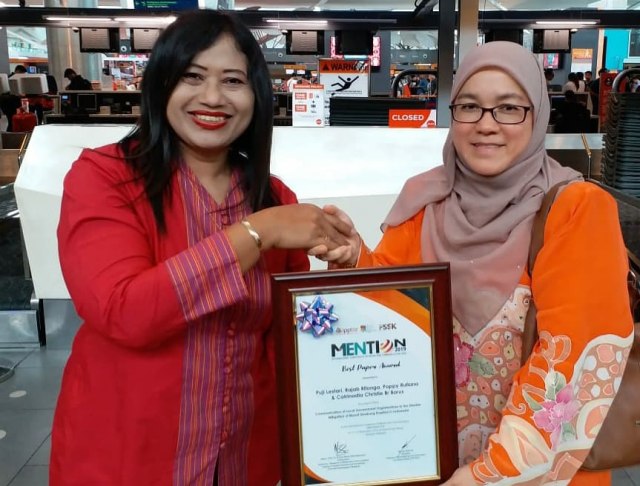A proud achievement has been achieved from the world of higher education in Yogyakarta. It is because the scientific work (paper) that was spawned by one of the state universities (PTN) in Yogyakarta is the from Universitas Pembangunan Nasional ‘Veteran’ Yogyakarta (UPNVY).
The Indonesian research paper presented at the International Conference on Communication and Media (Mention 2019) at Universiti Kebangsaan Malaysia (UKM) made it into the 5 best scientific papers.
"I was shocked and happy, miss. I did not expect it”, said Puji Lestari, the Chairman of the Research Team from UPNVY when contacted by Tugu Jogja, Saturday (11/23/2019).
However, the announcement was received when she arrived at the airport. As a result, one of the lecturers from UKM delivered an award to the airport. The award presentation was held at the airport.
The scientific work entitled "Communication of the Local Government Organization of the Disaster Mitigation of Mount Sinabung Eruption in Indonesia" apparently has been worked on since 2012. This paper, written by Puji Lestari, Rajab Ritonga, and Poppy Ruliana, examines the communication model that can be applied by local governments to mitigate disasters.
While in the field, the research was also apparently assisted by Eko Teguh Paripurno, Disaster Specialist (the Chairman of the UPNVY Disaster Study Center) and Arif Rianto Nugroho, UPNVY Geology Lecturer.
She said that until 2019, the eruption of Mount Sinabung still left problems, one of which was the communication between survivors and the government which was often not in a matched.
"There are often differences in perceptions of communication problems in channeling aid, etc", said the woman who is also the chairman of the Association of Indonesian Journal of Communication Management (APJIKI).
Between the space rehearsal and the field rehearsal, according to her, the communication was the key to reduce the risk of disaster and it needs to be understood together between the government and the community. One of the things that triggered the commotion was the lack of communication.
She also compared the situation when the local government was never given a simulation. The mask distribution was too late. Based on her research conducted in Karo, North Sumatra, the field rehearsal simulation method was considered more effective.
"They (the simulation participants) are easy to remember, they only need high costs", said the woman who was the recipient of the 11th year of a research grant.
She also hopes that the people who live in disaster prone areas will be able to carry out various activities for disaster mitigation, dissemination or communication for disaster mitigation.
"The aim is to make the community resilient to disasters. We are ready (and) safe", she said.
Source:
puji_lestari.jpg
Jl. SWK 104 (Lingkar Utara), Condongcatur, Yogyakarta 55283 (Kampus Pusat)
Jl. Babarsari 2 Yogyakarta 55281(Kampus Unit II) | Telp. +62 274 486733



